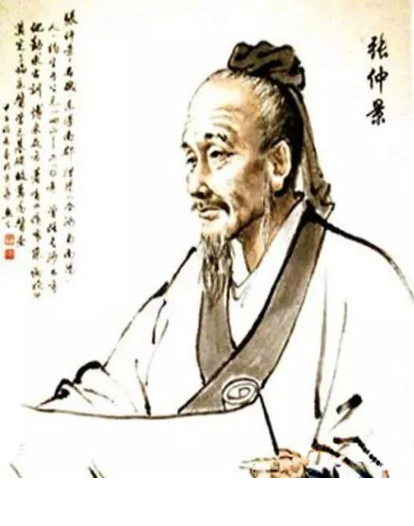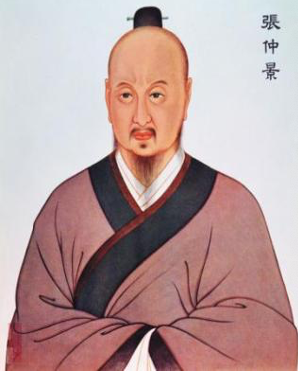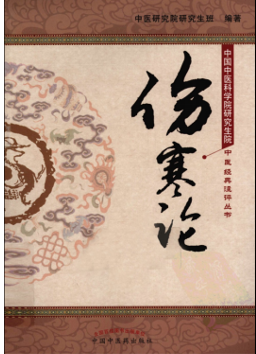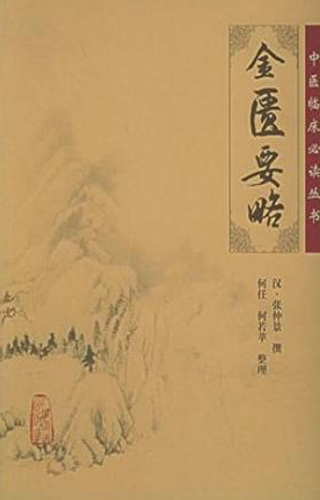Zhang Zhongjing - The Founder of the Traditional Chinese Medicine
概述Introduction
 张仲景(约公元150~154年—约公元215~219年),南阳涅阳县人(今河南省邓州市穰东镇张寨村)。东汉末年医学家,被后人尊称为“医圣”,如今在世界上也被称为中国的希波克拉底。张仲景广泛收集医方,写出了传世巨著《伤寒杂病论》。它确立的“辨证论治”原则,是中医临床的基本原则,是中医的灵魂所在。
张仲景(约公元150~154年—约公元215~219年),南阳涅阳县人(今河南省邓州市穰东镇张寨村)。东汉末年医学家,被后人尊称为“医圣”,如今在世界上也被称为中国的希波克拉底。张仲景广泛收集医方,写出了传世巨著《伤寒杂病论》。它确立的“辨证论治”原则,是中医临床的基本原则,是中医的灵魂所在。
Zhang Zhongjing(about A.D.150~154—A.D. 215~219) was born inNieyang County, Nanyang(nowZhangzhai Village, Rangdong Town, Dengzhou City, Henan Province). As a famous physician in the late Eastern Han Dynasty, he is honored as the "saint of medicine" by later generations and referred to as the Chinese Hippocrates in the world. He collected medical prescriptions extensively and wrote the great bookTreatise on Febrile and Miscellaneous Diseases,handed down from generation to generation. The principle of "dialectical diagnosis and treatment" established by it is the basic principle of TCM clinical practice and the soul of TCM as well.
在方剂学方面,《伤寒杂病论》也做出了巨大贡献,创造了很多剂型,记载了大量有效的方剂。其所确立的六经辨证的治疗原则,受到历代医学家的推崇。这是中国第一部从理论到实践、确立辨证论治法则的医学专著,是中国医学史上影响最大的著作之一,是后学者研习中医必备的经典著作,广泛受到医学生和临床大夫的重视。
With the pharmacology of formulae,Treatise on Febrile and Miscellaneous Diseaseshas also made great contributions, created many formulae and recorded a large number of effective prescriptions. The treatment principle of six-meridian dialectic established by it has been highly acclaimed by medical scientists of all dynasties. This is China's first medical monograph establishing the principle of syndrome differentiation and treatment from theory to practice. It is one of the most influential works in the history of Chinese medicine. It is a necessary classic for later scholars to study traditional Chinese medicine, and widely valued by medical students and clinical doctors.
生平简介Profile
张仲景生活在东汉末年,是中国历史上一个充满战乱的动荡时代,百姓死于流离途中者不可胜数。据史书记载,当时疫情频发。张仲景的家乡南阳地区当时也接连发生瘟疫大流行,许多人因此丧生。面对瘟疫的肆虐,他十分悲愤。因而,他痛下决心,潜心研究伤寒病的诊治,一定要制服伤寒症这个瘟神。
 Zhang Zhongjinglived in the late Eastern Han Dynasty, which was an extremely turbulent era full of wars in Chinese history. Countless people died on the tramp. According to historical records, epidemics occurred frequently at that time.Zhang Zhongjing'shometown,Nanyangarea also suffered from a plague pandemic one after another, and many people died as a result. Facing the rampant plague,Hefelt very sad and indignant. Therefore, he made up his mind to study the diagnosis and treatment of typhoid fever to subdue the plague.
Zhang Zhongjinglived in the late Eastern Han Dynasty, which was an extremely turbulent era full of wars in Chinese history. Countless people died on the tramp. According to historical records, epidemics occurred frequently at that time.Zhang Zhongjing'shometown,Nanyangarea also suffered from a plague pandemic one after another, and many people died as a result. Facing the rampant plague,Hefelt very sad and indignant. Therefore, he made up his mind to study the diagnosis and treatment of typhoid fever to subdue the plague.
建安年间,他行医游历各地,亲眼目睹了各种疫病流行对百姓造成的严重后果。其间,他将自己多年对伤寒症的研究付诸实践,进一步丰富了经验,提高了理性认识。经过数十年的努力,终于写成了《伤寒杂病论》的不朽之作。这是继《黄帝内经》之后,又一部最有影响的医学典籍。
During the Jian'an period, he practiced medicine and traveled all over the country. He witnessed the serious consequences of various epidemics on the people. During the time, he put his years of research on typhoid fever into practice, enriching his experience and improving his rational understanding. After decades of efforts, he had finally written the immortal bookTreatise on Febrile and Miscellaneous Diseases,another most influential medical classic afterHuangdi’s Canon of Medicine.
著作Works
 1.《伤寒杂病论》(已经失传,中医四大经典著作之一)书中全面阐述了中医的理论和治病原则,是我国最早的理论联系实际的临床诊疗专书 。
1.《伤寒杂病论》(已经失传,中医四大经典著作之一)书中全面阐述了中医的理论和治病原则,是我国最早的理论联系实际的临床诊疗专书 。
Treatise on Febrile and Miscellaneous Diseases(which has been lost and is one of the four classic works of TCM) comprehensively expounds the theory and treatment principles of traditional Chinese medicine. It is the earliest book of clinical diagnosis and treatment integrating theory with practice in China.
2.《伤寒论》,由晋代太医王叔和根据自己搜寻到《伤寒杂病论》的伤寒部分的轶文整理而成。
Wang Shuhe, an imperial doctor in the Jin Dynasty, compiledTreatise on Febrile Diseasesbased on the anecdotes of the febrile part ofTreatise on Febrile and Miscellaneous Diseases.
 3.《金匮要略》,宋代王洙、林亿等人在偶然的机会发现《伤寒杂病论》残简,将关于杂病的部分整理成册,更名为《金匮要略》刊行于世。
3.《金匮要略》,宋代王洙、林亿等人在偶然的机会发现《伤寒杂病论》残简,将关于杂病的部分整理成册,更名为《金匮要略》刊行于世。
The Synopsis in the Golden Cabinet.In the Song Dynasty,Wang Zhu, Lin Yi, etc.,found the remnant ofTreatise on Febrile and Miscellaneous Diseasesby chance, and sorted out the parts on miscellaneous diseases into a volume and renamed itThe Synopsis in the Golden Cabinetfor publication.
主要贡献Main contributions
张仲景于公元205年写成医学著作《伤寒杂病论》,奠定了中医学的基本理论基础,将中医学从经验医学变成了系统化的理论医学。其对于推动后世医学的发展起了巨大的根本作用。
Zhang Zhongjingwrote his medical workTreatise on Febrile and Miscellaneous Diseasesin A.D. 205, which laid the basic theoretical foundation of TCM and turned traditional Chinese medicine from empirical medicine to systematic theoretical medicine. It has played a great and fundamental role in promoting the development of later generations' medicine.
他创造性地把外感热性病的所有症状,归纳为六个证候群(即六个层次)和八个辨证纲领,以六经(太阳、少阳、阳明、太阴、少阴、厥阴)来分析归纳疾病在发展过程中的演变和转归,以八纲(阴阳、表里、寒热、虚实)来辨别疾病的属性、病位、邪正消长和病态表现。由于确立了分析病情、认识证候及临床治疗的法度,因此辨证论治不仅为诊疗一切外感热病提出了纲领性的法则,同时也给中医临床各科找出了诊疗的规律,成为指导后世医家临床实践的基本准绳。
He creatively summarized all the symptoms of exogenous febrile diseases into six syndrome groups (i.e. six levels) and eight syndrome differentiation guidelines, analyzed and summarized the evolution and outcome of the disease in the development process with Six Meridians (Taiyang, Shaoyang, Yangming, Taiyin, Shaoyin and Jueyin), and distinguished the attribute, location, pathogenic and vital contention, signals of the disease with Eight Guidelines (yin and yang, exogenous and endogenous, cold and heat, deficiency and excess). Due to the establishment of the law of analyzing the condition, recognizing the syndrome and clinical treatment, Dialectical Diagnosis and Treatment not only put forward guiding rules for the diagnosis and treatment of all exogenous fever diseases, but also found out the laws of diagnosis and treatment for all clinical departments of traditional Chinese medicine, which has become the basic criterion to guide the clinical practice of future generations of doctors.
热词学习Hot words
Traditional Chinese Medicine 传统中医
Treatise on Febrile Disease伤寒论
Dialectical Diagnosis and Treatment辨证论治
撰稿:英语教研室芮永生、王薇平
参考文献:1.百度百科;2.中医百科;3. Encyclopedia Britannica